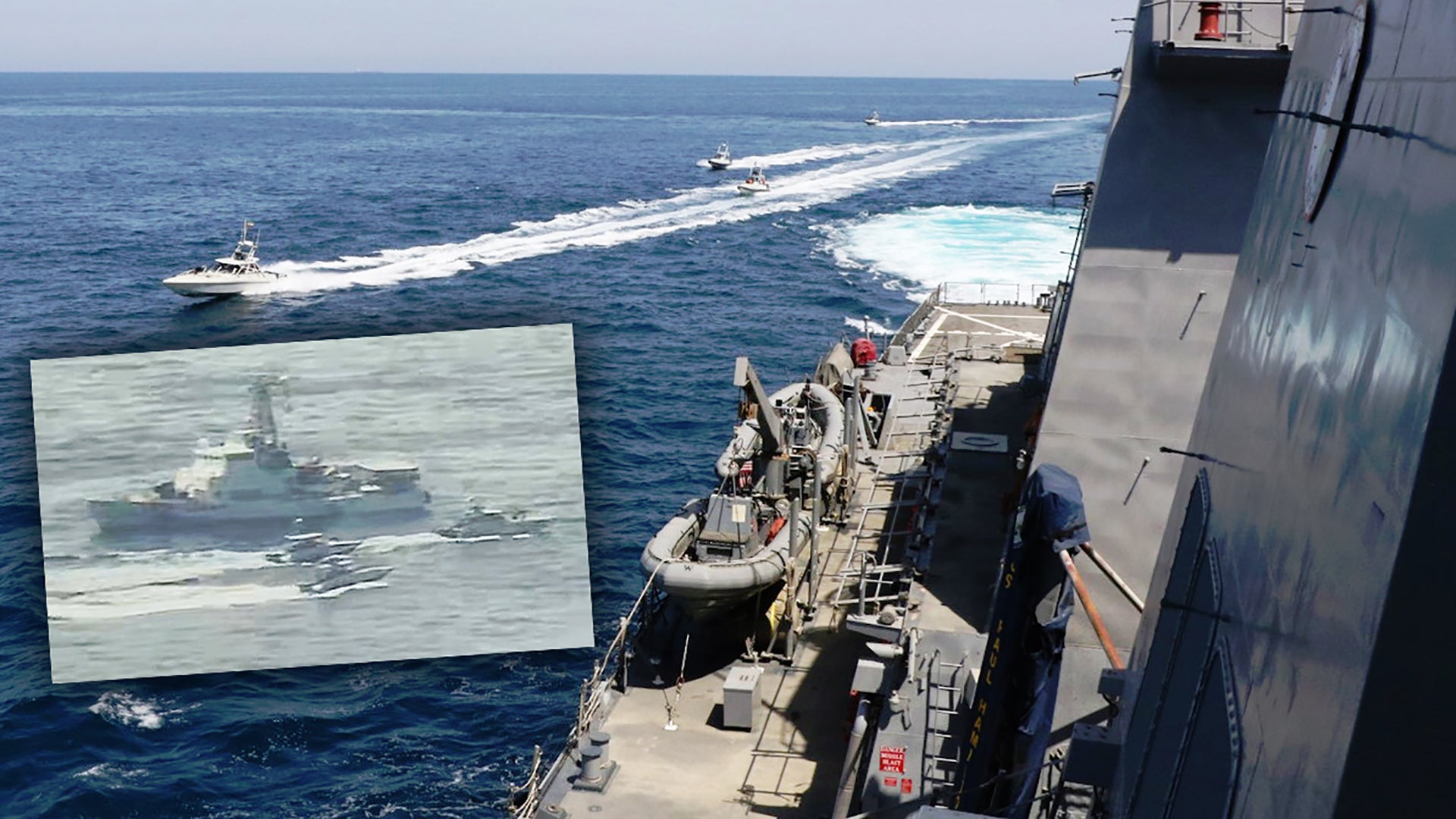The U.S. Navy has released video and pictures of Iranian speedboat-type craft harassing its ships, including the expeditionary sea base USS Lewis B. Puller, as well as vessels from the U.S. Coast Guard, in the Persian Gulf. Approximately 11 of the watercraft, belonging to the Islamic Revolutionary Guard Corps Navy, swarmed the group of vessels, which were training with U.S. Army AH-64E Apache attack helicopters at the time.

The incident took place on Apr. 15, 2020 in international waters, according to a statement from U.S. Naval Forces Central Command, or NAVCENT. In addition to Puller, the Arleigh Burke class destroyer USS Paul Hamilton, the Cyclone class patrol craft USS Firebolt and USS Sirocco, and the Island class patrol cutters USCGC Wrangell and USCGC Maui were also on the scene at the time.
“The IRGCN [Islamic Revolutionary Guard Corps Navy] vessels repeatedly crossed the bows and sterns of the U.S. vessels at extremely close range and high speeds, including multiple crossings of the Puller with a 50 yard closest point of approach (CPA) and within 10 yards of Maui‘s bow,” according to NACVENT’s statement. “The U.S. crews issued multiple warnings via bridge-to-bridge radio, five short blasts from the ships’ horns and long-range acoustic noise maker devices, but received no response from the IRGCN.”



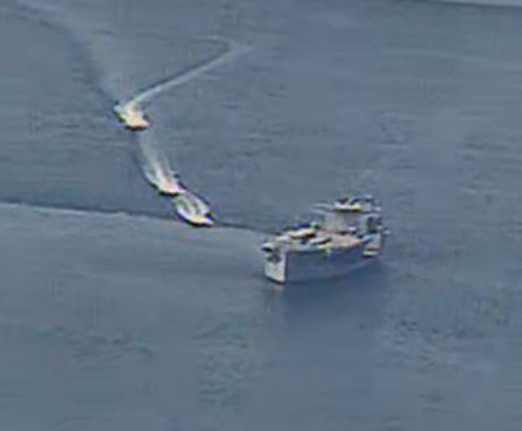

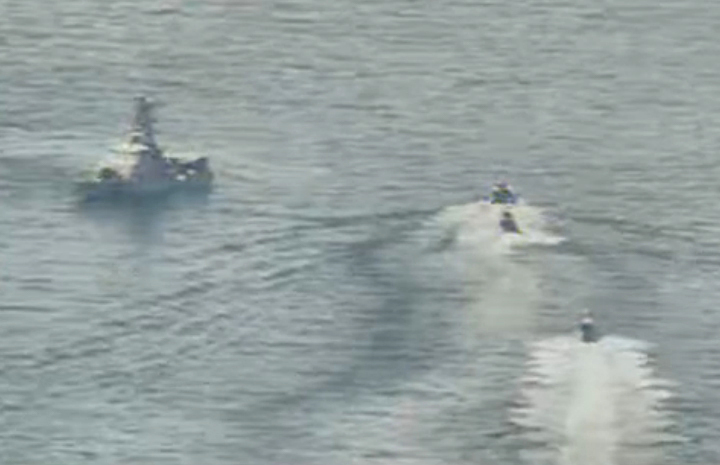


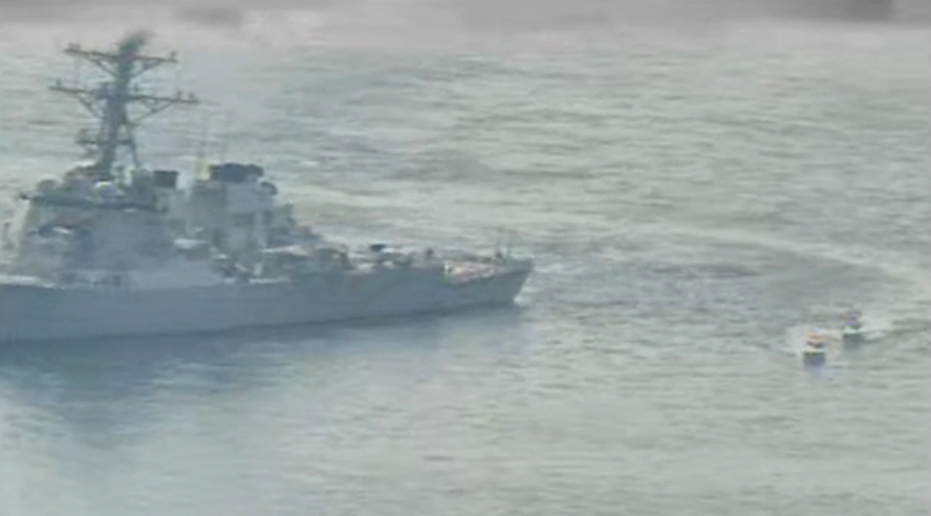

“After approximately one hour, the IRGCN vessels responded to the bridge-to-bridge radio queries, then maneuvered away from the U.S. ships and opened distance between them,” the statement continued. “The IRGCN’s dangerous and provocative actions increased the risk of miscalculation and collision, were not in accordance with the internationally recognized Convention on the International Regulations for Preventing Collisions at Sea (COLREGS) ‘rules of the road’ or internationally recognized maritime customs, and were not in accordance with the obligation under international law to act with due regard for the safety of other vessels in the area.”

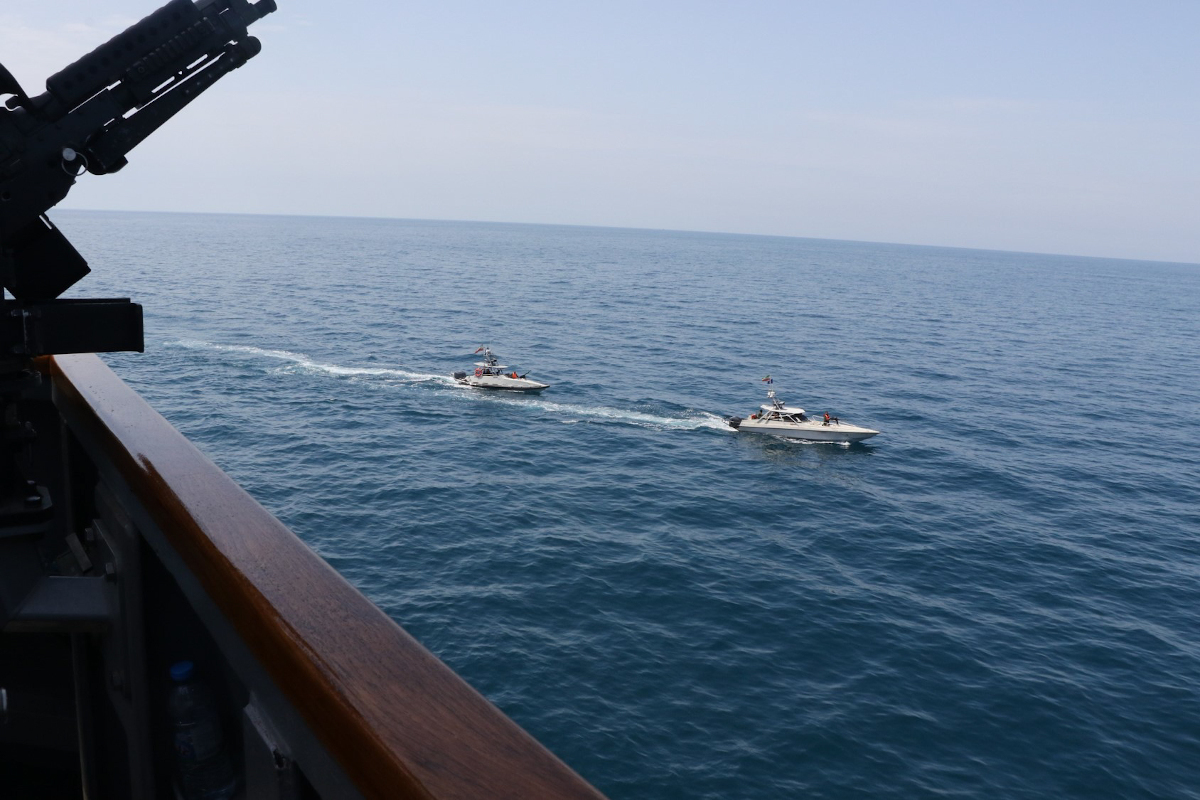
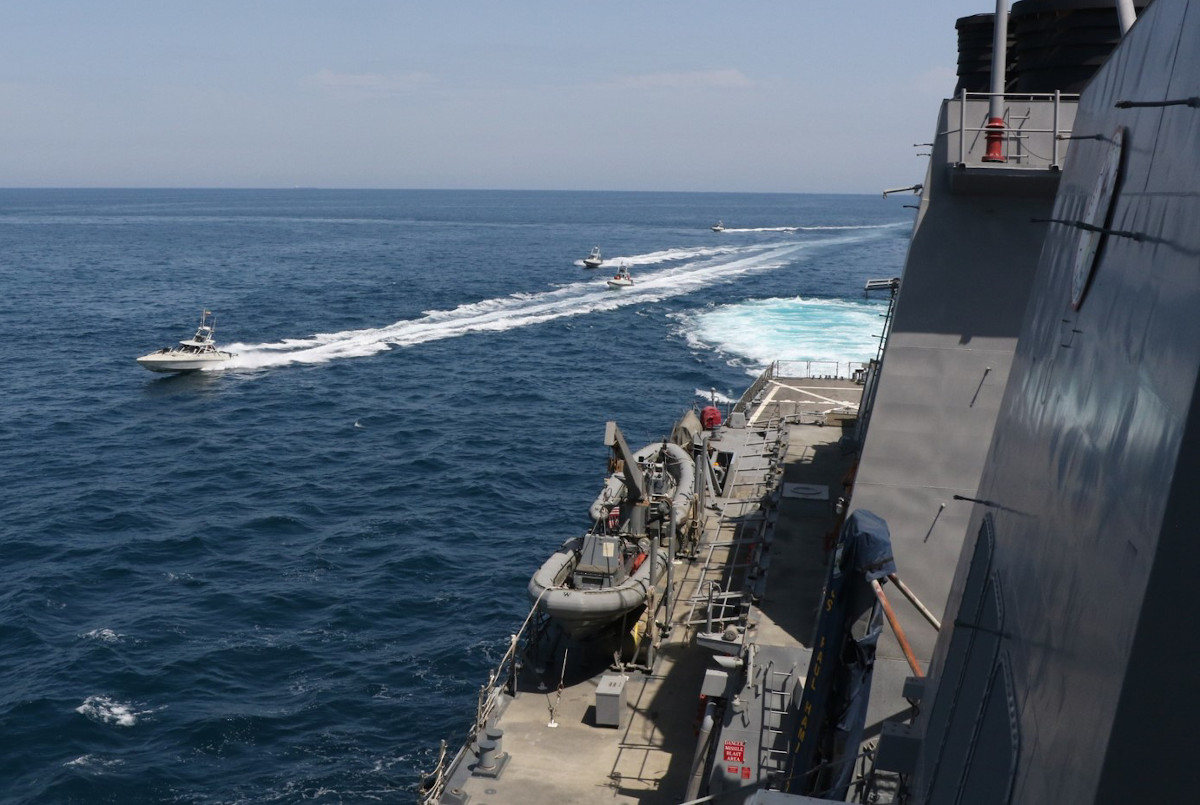
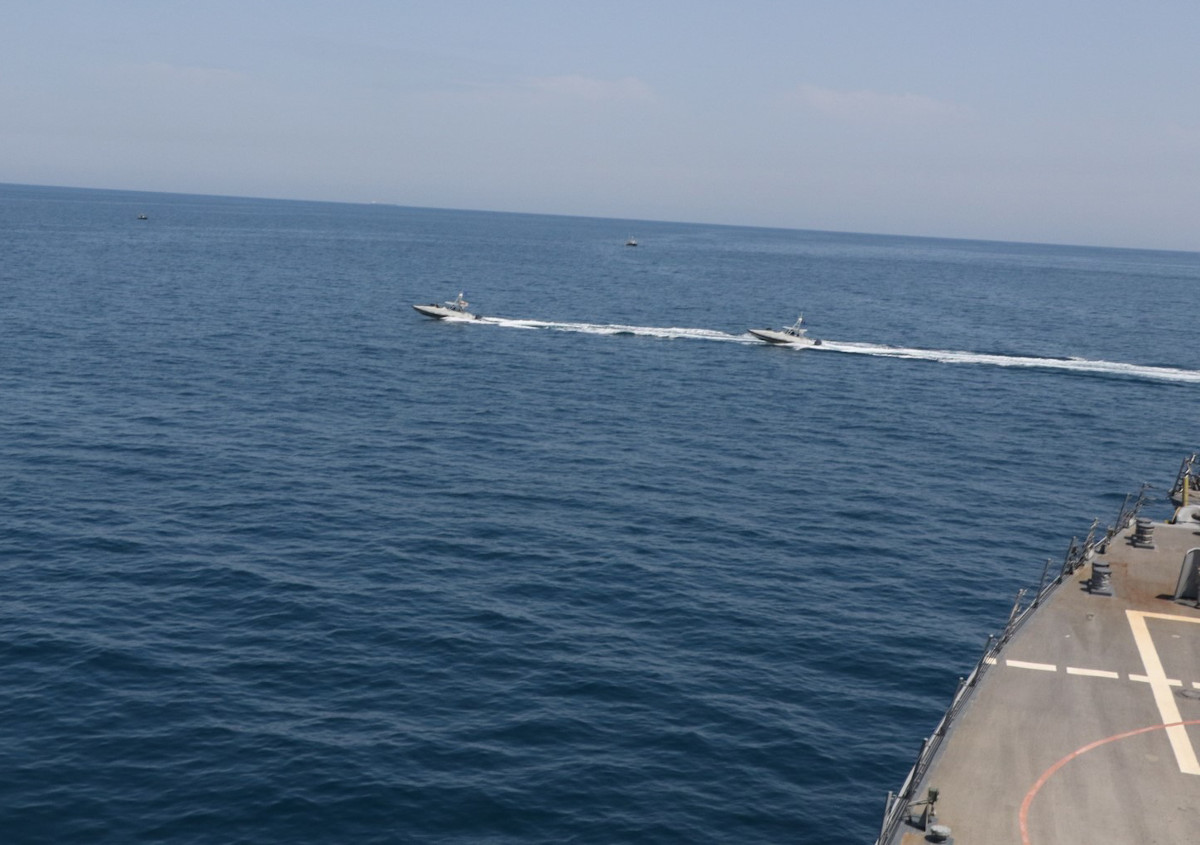
As the Navy notes, in addition to the simple danger of collisions with the Iranian boats as they went speeding around the American vessels, the provocative maneuvers raised the risk of dangerous miscalculations as they are what one might expect to see in a swarming boat attack. In December 2019, Iranian media claimed to have successfully challenged the Nimitz class aircraft carrier USS Abraham Lincoln and other ships from her strike group as they passed through the highly strategic Strait of Hormuz. The Navy subsequently confirmed to The War Zone that a large number of its boats had sailed near the ships during the transit, but said that this was “within normal behavior patterns for Iran.”
The reason why Army Apaches train to operate from ships like Puller, in the first place, is, in part, to be able to respond to exactly these kinds of attacks. You can read more about this Army-Navy training, which has been going on since March, in this recent War Zone piece.
In March, an Air Force AC-130W Stinger II gunship also took part in a training exercise with Navy ships and aircraft in the Persian Gulf, again specifically to work on tactics, techniques, and procedures to respond to small boat attacks. Air Force A-10 Warthog attack aircraft have regularly trained in the past to perform similar maritime missions and, last year, the War Zone first reported on photos showing that service’s F-15E Strike Eagles carrying cluster munitions, an ideal weapon for engaging boat swarms, while on patrol over the Persian Gulf.

The threat of Iranian small boat attacks, or the IRGC using those craft to conduct hostile boardings, is very real. There were unconfirmed reports that the IRGC had briefly seized the Hong Kong-flagged tanker SC Taipei in the Gulf of Oman just yesterday. Armed men reportedly board that ship and directed it to move to an area close to the Iranian coast, before releasing it later in the day. At the time of writing, no group has claimed responsibility for the incident and there is no official word from the owners or operators of the SC Taipei, or international maritime organizations, as to who carried out the boarding operation.
In July 2019, the IRGC notably seized control of the British-flagged oil tanker Stena Impero in response to the United Kingdom detaining one of Iranian supertanker. This was just one of a number of ships Iran seized last year. The U.S. government has also blamed the regime in Tehran for a string of attacks on commercial oil tankers.

Iran has a long history of harassing U.S. military vessels, specifically, in the Persian Gulf, as well, but reported incidents had notably dropped off in recent years. Since tensions first spiked between the United States and Iran in May 2019, however, there has been an increase in various forms of Iranian provocations throughout the region, including in the Gulf of Oman, as well. This included the IRGC’s shootdown of a Navy RQ-4A Global Hawk drone over the Gulf of Oman last June, which was followed by U.S. Marines aboard the Wasp class amphibious assault ship USS Boxer bringing down an Iranian drone in the highly strategic Strait of Hormuz the following month.
This is not to mention a host of incidents on land throughout the Middle East over the past 18 months that the United States blames Iran or its regional proxies. This includes unprecedented suicide drone and cruise missile strikes on Saudi Arabian oil infrastructure in September 2019 and the equally unprecedented Iranian ballistic missile strikes aimed at U.S. forces in Iraq in January 2020. The latter was in retaliation for the U.S. government’s decision to kill Iranian General Qasem Soleimani in Baghdad that same month. Iranian proxies in Iraq continue to launch their own rocket attacks, which have been a regular occurrence in Iraq for months, provoking American counterattacks.
It’s unclear what has necessarily provoked this latest incident between U.S. and Iranian forces, but it comes as the United States has continued its campaign of maximum pressure against the regime in Tehran. This includes crippling sanctions, the impacts of which have been even more pronounced in recent months due to the COVID-19 pandemic.
This virus has hit Iran particularly hard and the country has experienced trouble securing medical and other aid due to U.S. and international sanctions. The pandemic has also reportedly increased criticism of the regime within Iran and experts have warned that this could drive authorities in Tehran to seek drastic ways to distract from a domestic situation.
Whatever the case, the incident clearly shows that tensions, as well as the risk of conflict, between the United States and Iran remain high, even amidst the pandemic.
We will continue to update this story as more information becomes available.
Contact the author: joe@thedrive.com
